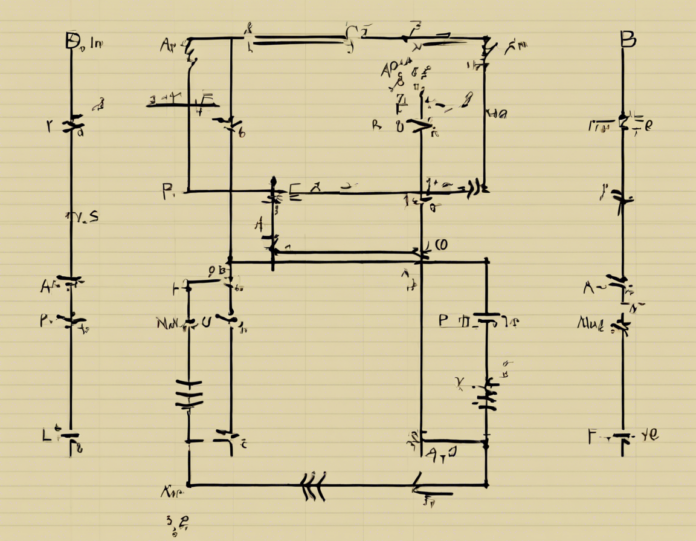To understand how to calculate the total resistance between two points in a circuit, one must have a basic understanding of resistors, series and parallel connections, and Ohm's Law. When multiple resistors are present in a circuit, their combined resistance affects the flow of current. This article will delve into the methods and formulas to calculate the total resistance between points A and B in a circuit, regardless of its complexity.
Understanding Resistors:
Before delving into total resistance calculations, it's crucial to understand resistors themselves. A resistor is a two-terminal electronic component that resists or limits the flow of electrical current. Resistors are measured in ohms (Ω) and can be connected in various ways within a circuit to achieve different total resistance values.
Series and Parallel Connections:
Two common ways to connect resistors in a circuit are in series and in parallel.
- In a series connection, resistors are connected end-to-end, providing only one path for current flow. The total resistance in a series circuit is the sum of individual resistances.
- In a parallel connection, resistors are connected across common points, providing multiple paths for current flow. The total resistance in a parallel circuit is calculated differently than in a series circuit.
Calculating Total Resistance in Series:
When resistors are connected in series, the total resistance (Rt) can be found using the formula:
[ R_t = R_1 + R_2 + R_3 + ... ]
Where R1, R2, R3 are the resistances of individual resistors connected in series.
Example: If a circuit has three resistors connected in series with resistances of 4Ω, 6Ω, and 8Ω respectively, the total resistance would be:
[ R_t = 4Ω + 6Ω + 8Ω = 18Ω ]
Calculating Total Resistance in Parallel:
Calculating total resistance in a parallel circuit is more complex. The reciprocal of the total resistance in a parallel circuit (1/Rt) is the sum of the reciprocals of the individual resistances:
[ \frac{1}{R_t} = \frac{1}{R_1} + \frac{1}{R_2} + \frac{1}{R_3} + ... ]
After finding the sum of the reciprocals, the total resistance can be found by taking the reciprocal of that sum:
[ R_t = \frac{1}{\frac{1}{R_1} + \frac{1}{R_2} + \frac{1}{R_3} + ...} ]
Example: If the same resistors as above are connected in parallel, the total resistance would be calculated as follows:
[ \frac{1}{R_t} = \frac{1}{4Ω} + \frac{1}{6Ω} + \frac{1}{8Ω} ]
[ \frac{1}{R_t} = \frac{6}{24} + \frac{4}{24} + \frac{3}{24} = \frac{13}{24} ]
[ R_t = \frac{24}{13} ≈ 1.85Ω ]
Combination Circuits:
Often, circuits possess both series and parallel components. Calculating total resistance in such combination circuits requires breaking them down into simpler series and parallel segments and applying the appropriate formulas iteratively until reaching the desired points A and B.
Using Ohm's Law:
Ohm's Law states that the current (I) flowing through a circuit is directly proportional to the voltage (V) applied to the circuit and inversely proportional to the resistance (R) of the circuit:
[ V = I \times R ]
This fundamental relationship between voltage, current, and resistance can also aid in calculating the total resistance between points A and B in a circuit.
FAQs:
- What is total resistance in a circuit?
-
Total resistance in a circuit refers to the equivalent resistance that replaces all individual resistors and which has the same effect on the circuit as the original configuration.
-
How do you calculate total resistance in a series circuit?
-
Total resistance in a series circuit is the sum of individual resistances: ( R_t = R_1 + R_2 + R_3 + ... )
-
How is total resistance calculated in a parallel circuit?
-
In a parallel circuit, total resistance is derived from the sum of the reciprocals of individual resistances: ( R_t = \frac{1}{\frac{1}{R_1} + \frac{1}{R_2} + \frac{1}{R_3} + ...} )
-
What happens to total resistance when resistors are added in series?
-
Total resistance increases when resistors are added in series because it offers more resistance to the flow of current.
-
How does total resistance change in a parallel circuit when resistors are added?
- Adding more resistors in parallel decreases the total resistance as there are more paths for the current to flow, reducing the overall resistance.
Understanding how to calculate total resistance in a circuit is essential for designing and troubleshooting electrical systems efficiently. By grasping the concepts of resistors, series and parallel connections, Ohm's Law, and their interplay in circuits, one can confidently analyze and manipulate complex circuits to meet specific design requirements.

